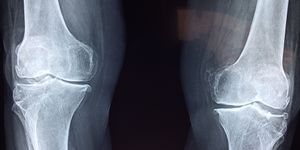3D Printing Breast Cancer Tumors
Breast cancer is among the most common types of cancer, particularly among women. In fact, other than skin cancers, it is the most common cancer among women in the United States. Men can get breast cancer too, though it is very rare. It’s estimated that about one in every eight women will develop breast cancer at some point in her life, making it a dangerous cancer requiring new and innovative treatment options.
Key to advancing new treatments for breast cancer patients is having a deep understanding of how cancer and tumors work: how do they grow? How do they interact with the human body? How do cells thrive, spread, and metastasize? All of these questions are key, but are often hard to answer. Generally, the approach to studying how cancer cell lines behave involve animal studies or in vivo. These approaches, despite having offered researchers important clues about cancer, have their limitations.
A team of researchers at Penn State are seeking to change that. In a first, a research team has managed to 3D print breast cancer tumors and actually treat the tumors with anti-cancer therapies. Their pioneering work is published in two recent articles in Advanced Functional Materials and Biofabrication.
This new approach lays the groundwork for the future development of tumor models to study cancer and treatment options, with a high degree of precision. This new approach could shed new light on the interactions between tumors and the human immune system, paving the way for more precise treatments.
The team’s technique for printing tumor models involves a process called aspiration-assisted bioprinting. This approach allowed the team to create 3D tissue that was then formed into an actual model of a breast tumor, complete with blood vessels to feed the tumor. The final result is ultimately a model made from human cells to better replicate the environment in which tumors exist. This has been one of the trickiest parts of developing tumor models: replicating the tumor environment in the body. Researchers hope their model could help overcome this challenge.
To test how precise their model was, researchers treated the tumor with a common breast cancer chemotherapy agent, doxorubicin. When they found that the tumor responded to that agent, they also tested an immunotherapeutic treatment, a CAR-T cell, and found that cells in the tumor were able to start fighting the cancer cells.
Sources: Science Daily; Advanced Functional Materials; Biofabrication








